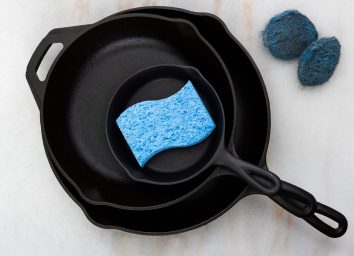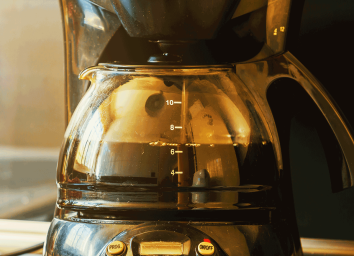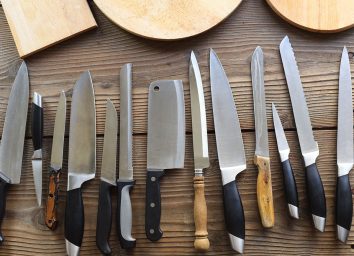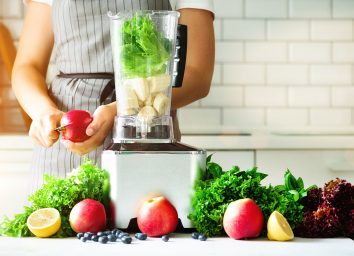The Top 3 Germiest Spots in Your Kitchen—and How to Clean Them
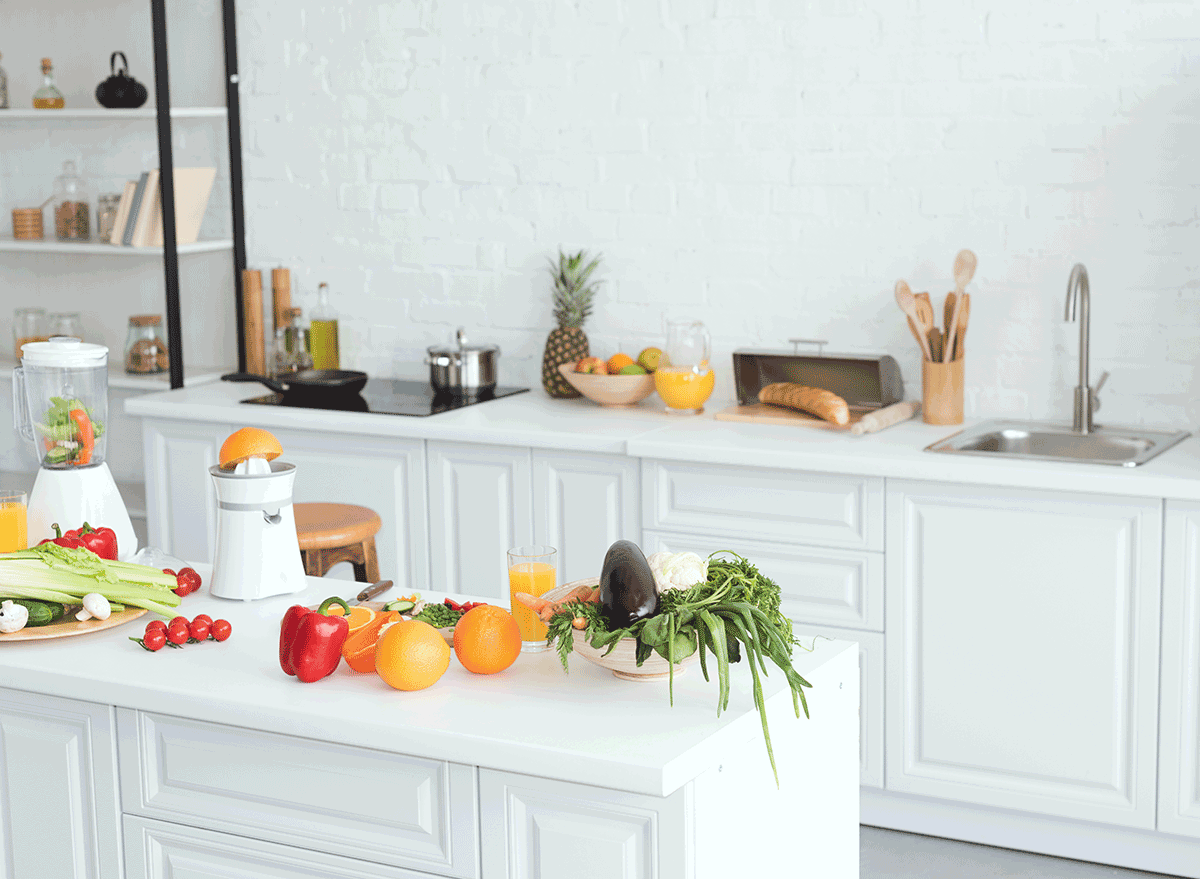
Germs—aka bacteria, viruses, fungi, and protozoa—are unavoidable. Sorry to tell you, but these microorganisms that cause infections in people, animals, and plants are likely all over your home, including in your kitchen.
In fact, there are certain kitchen hot spots that seem to get overlooked when cleaning, making them some of the most germ-infested areas. Think: Anything from refrigerator door handles and microwave buttons to wooden cutting boards and drip coffee makers.
With coronavirus (COVID-19) on the rise, and the potential for self-imposed quarantine looming (start implementing these coronavirus precautions now), making sure your home is as clean as possible is super important. Then again, cleaning your kitchen from top-to-bottom on the regular is always a smart idea to keep it hygenic and germ-free.
Here are the specific germy areas in your kitchen to pay special close attention.
Where do the most germs tend to live in the kitchen?
"Some of the biggest germ culprits in your kitchen include the water dispenser on your refrigerator, countertops, and garbage disposal," says cleaning expert Beth McGee, author of Get Your House Clean Now.
Why do these areas attract so much bacteria?
As for the water dispenser, NOW's investigative reporter took water samples from six different dispensers and measured the bacteria growth in each. Among the six, there were between 54 and 4,000 bacteria colonies. Surprisingly, the cleanliness of the water filter within the dispenser was not a factor in the bacteria colonies, according to bacteria expert Dr. Helene Ver Eecke of Metropolitan State University of Denver, who shared this information with ABC Nation News. In fact, simply touching the water dispenser introduces microbes, and the moisture invites them to grow. (How many times have you touched a gym water bottle to the dispenser, or refilled a glass of water from a cup you already drank out of?)
Your countertops can be contaminated with bacteria from cutting raw meat on them, or placing grocery bags, purses, or backpacks on them (bet you didn't think of that before).
"Kitchen countertops tend to be the dirtiest near the sink area because people wipe them down with sponges and cleaning cloths that have E. coli and other bacteria. The sponges and cloths just spread the germs all over the countertops," Dr. Charles Gerba, a microbiologist and professor at the University of Arizona in Tucson said in an article for Food & Wine.
The garbage disposal is also a key player in housing bacteria. "There's more E. coli in a kitchen sink than in a toilet after you flush it," Dr. Gerba also told Food & Wine. "The sink is a great place for E. coli to live and grow since it's wet and moist. Bacteria feed on the food that people put down the drain and what's left on dishes in the sink."
How should you clean these areas in the kitchen?
Did you know there is a difference between cleaning and disinfecting? If you wipe down a countertop with a warm cloth, sure, you may be getting that dried blob of spaghetti sauce off, but are you're not wiping away bacteria. In fact, you're actually spreading bacteria, which means it's that much more important to apply a disinfectant to the area immediately after it dries.
Disinfectants come in the form of liquids, sprays, or wipes. Here's how to use them to clean and disinfect these three germ-infested areas in the kitchen:
Water dispenser on refrigerator: Dampen a clean microfiber cloth with hot soapy water and spray bleach cleaner on it. Look up into the dispenser to see where the grime and mold have collected. Wipe it out with the cloth thoroughly. Rise and wring out your cloth and re-apply bleach cleaner as needed. Once it is cleaned, run the water dispenser for 10 seconds or so to get any loose particles out of the nozzle.
Countertops: Move countertop appliances and other gadgets out of the way to clean crumbs and spills from under them. If you leave food on the countertop, you will encourage rodents and bugs in the area, so clear food from countertops. Plus, once you introduce these nuisances, they can bring germs and waste to your food preparation areas. Make sure to use a clean microfiber cloth and hot soapy water to wipe down commonly used countertop spaces daily and all areas and under countertop items weekly.
Garbage disposal: Pull out any removable rubber inserts and pour a half cup of bleach down the drain on the disposal side and let it sit for about five minutes. Plug the drain. Fill your sink about three-quarters full with hot soapy water using a tablespoon of dish soap. Open the drain and let the water drain out into the garbage disposal. It will likely drain slowly, so let it drain that way. When the sink is half drained, turn on the disposal so the remainder of the water is pulled out by the disposal. Let the hot water run freely for about 30 seconds to rinse out the sink and disposal. Scrub the rubber inserts with a scrubbing sponge or cloth and a good grease-cutting detergent like Dawn. Rinse and let air dry, then replace.
